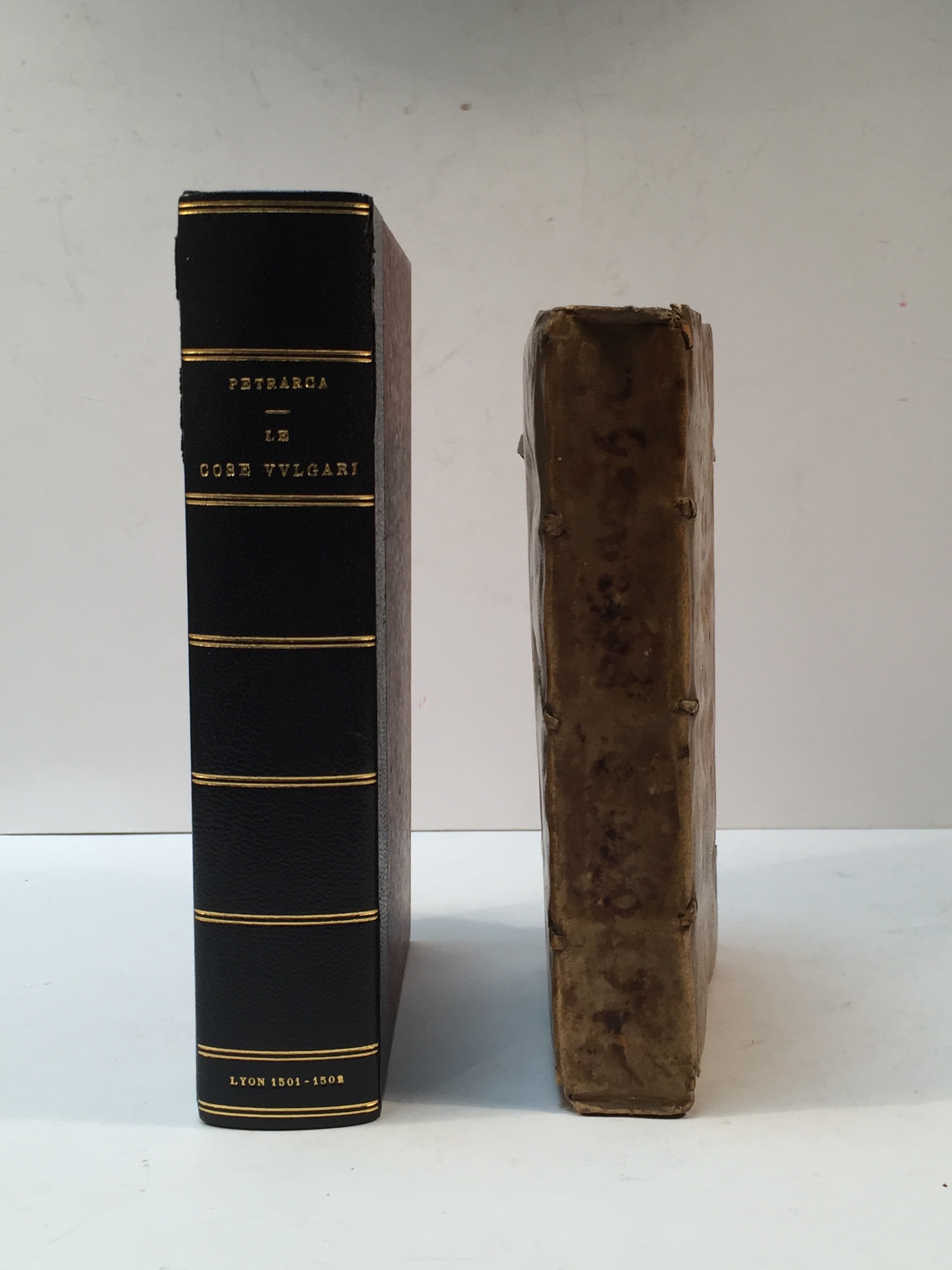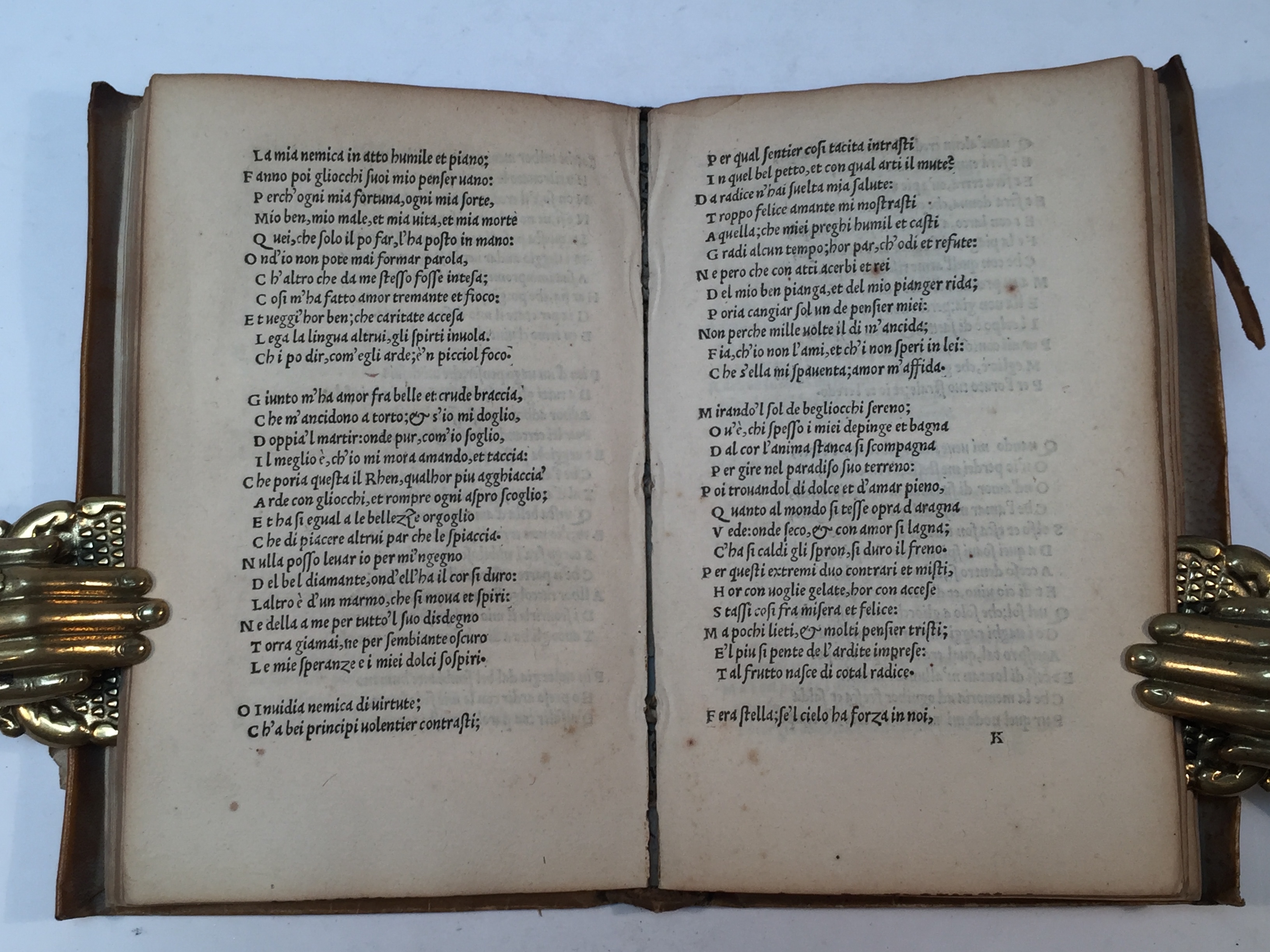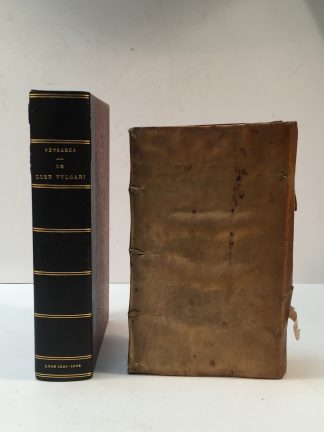PETRARCA, Francesco
FIRST COUNTERFEIT LYONNAISE EDITION
Le cose vulgari
Lyon, Baldassarre Gabiano, 1501-2£16,500.00
8vo. Three works in one, ff. 188 unnumbered, a-y 8 z 4 A 8 , separate t-p to each. Italic letter, little Roman. Slight age browning, first gathering with small grease stain, occasional minor spots. A fine, well-margined copy, on thick paper, in contemporary polished vellum, yapp edges. Bookplates of Eduardo J. Bullrich and Pierre Bergé to front pastedown, ‘A Barber 136 d’ and ‘674’ ms to first t-p. In folding box.
Although the colophon at the end of the ‘canzoni and sonetti’ states that the edition was printed by Aldus in 1501, it was actually published by Baldassare Gabiano in Lyon, probably between 1501 and 1502. It is typographically superior to Aldus’s edition (Brunet IV, 543), which was the first to feature his trademark italic type. Although Gabiano’s edition lacks Aldus’s letter to the reader and the ‘errata’, the latter were incorporated into the text. The lack of any information on the printer and city of publication suggests that it was intended for sale on the Italian market in the Veneto and the Papal states, where Aldus’s typographical privilege was in force. This first counterfeit with unnumbered leaves differs from a second one published c.1502, with page numbers in both Roman and Arabic type.
Fine copy of the first Lyonnaise counterfeit Aldine edition of Petrarch’s vernacular works—foundational texts for the establishment of Italian as a prestigious literary language. Petrarch (Francesco Petrarca, 1304-74) has been called ‘the father of Humanism’ and the initiator of the Renaissance due to his ground-breaking rediscovery of classical texts like Cicero’s letters. A prolific author of verse, epistles and essays, Petrarch lived between Italy and France, where he allegedly fell in love with Laura, an inspirational muse of whom little is known, except the fact that she was probably married. This edition is devoted to his ‘cose vulgari’—his texts in the vernacular—as found in a holograph ms preserved by the humanist Pietro Bembo. The ‘canzoniere’ is a collection of over 300 poems written for Laura, whose name reprises the ‘laurel’ of great poets. The author looks back to his unrequited love, his ‘sighs’ and ‘first error of youth’, for a lady who is physical, holy and ethereal at the same time. Inspired by the triumphal progresses of ancient Rome, ‘Trionfi’ celebrates in verse the allegorical figures of Love, Chastity, Death, Fame, Time and Eternity, providing reflections on the fleetingness of human existence which also permeate Petrarch’s entire production. Together with Dante and Boccaccio, Petrarch became one of the three models for the Italian literary language based on its Tuscan variant.
Rénouard 308:17; Brunet IV, 543; Bibliographie Lyonnaise VII, 15 ; Shaw, 2. Not in BM STC Fr. W. Kemp, ‘Counterfeit Aldines and Italic-Letter Editions Printed in Lyons 1502- 1510: Early Diffusion in Italy and France’, Papers of the Bibliographical Society of Canada 35 (1997), 75-100.In stock







